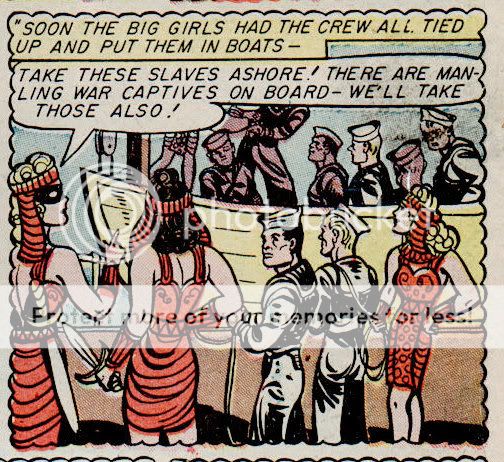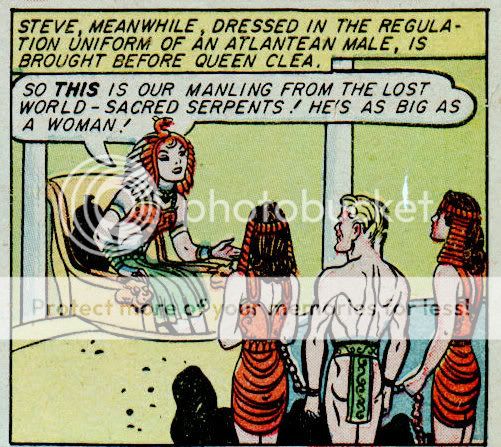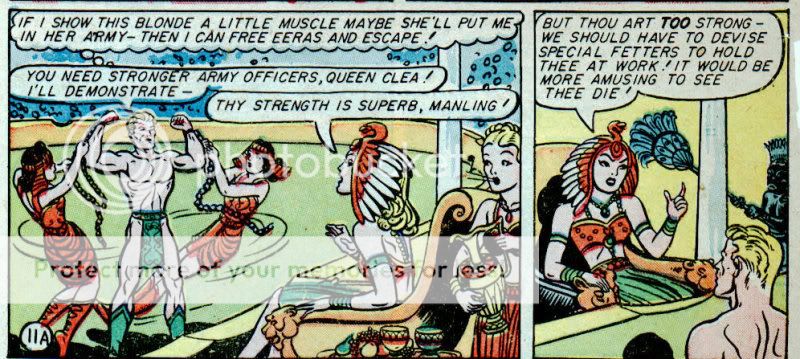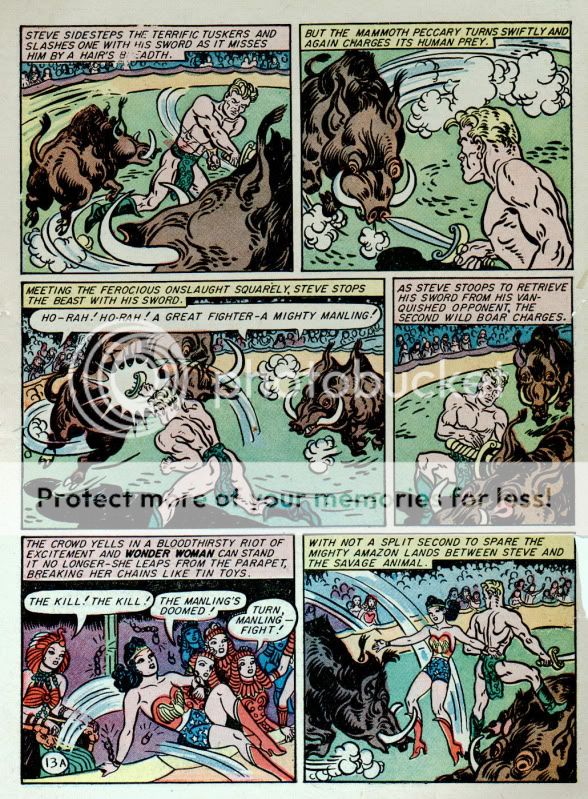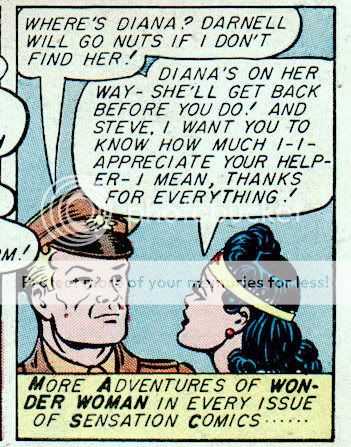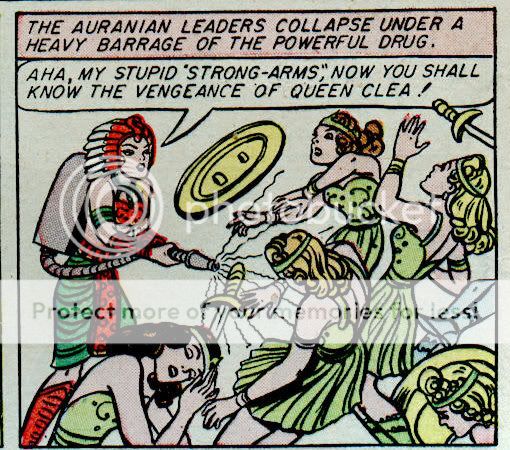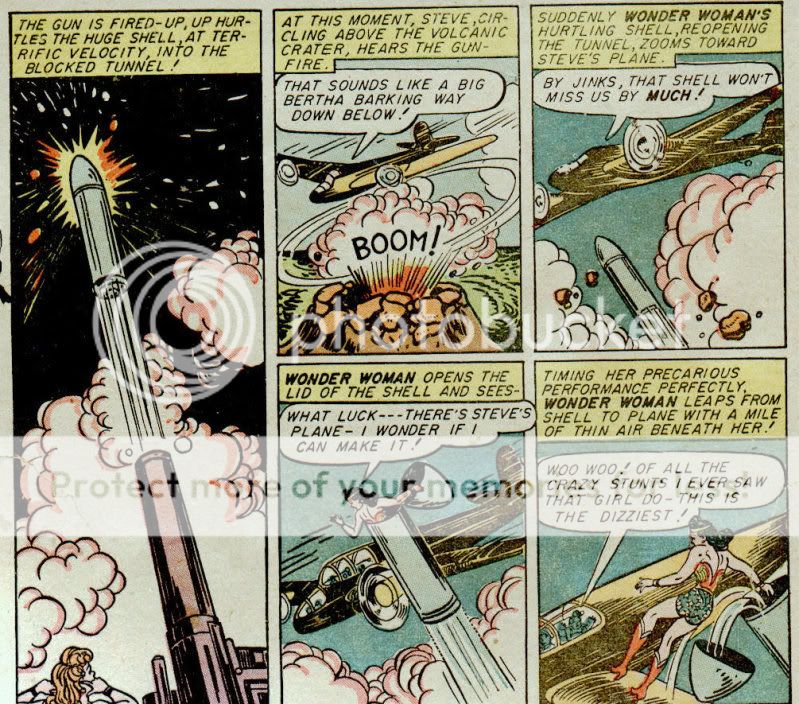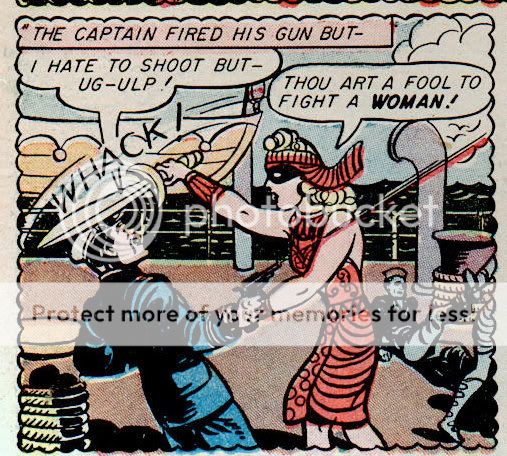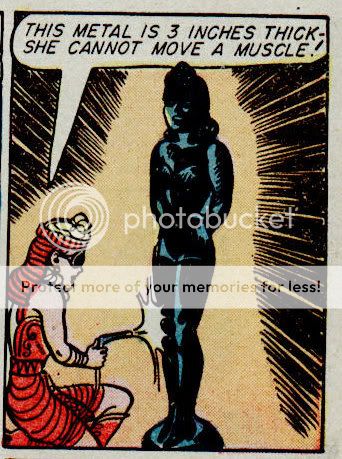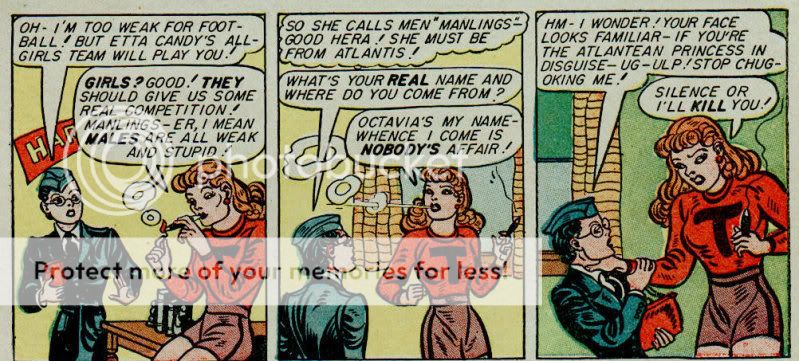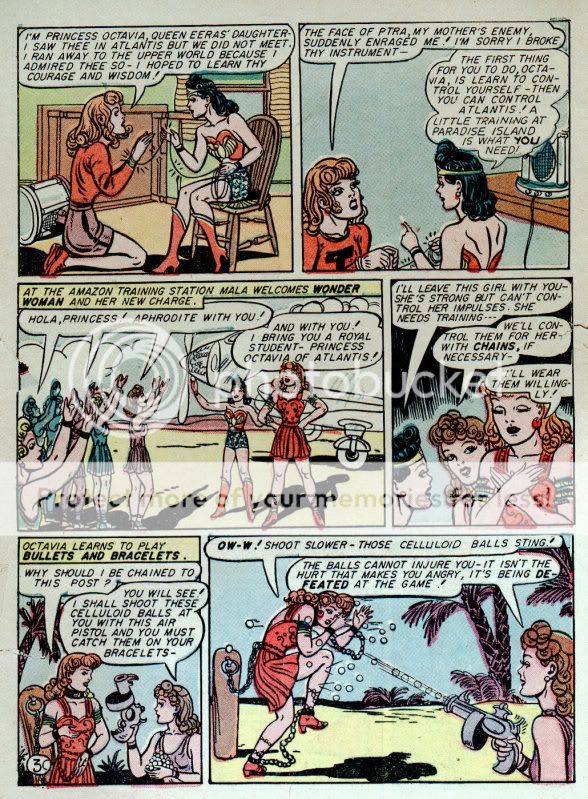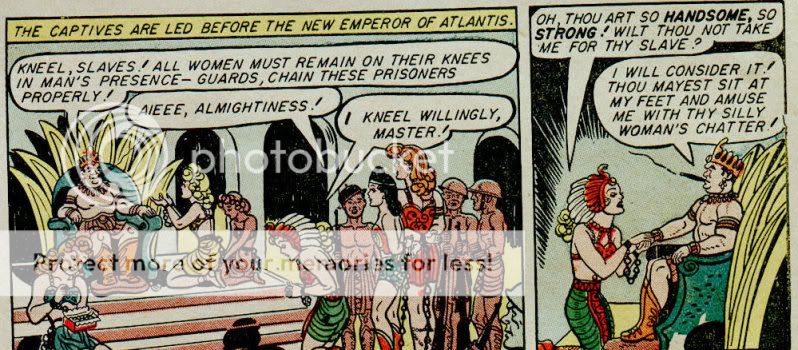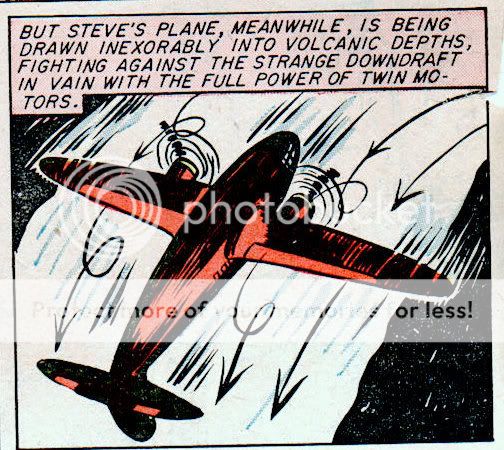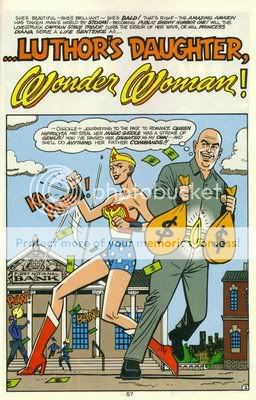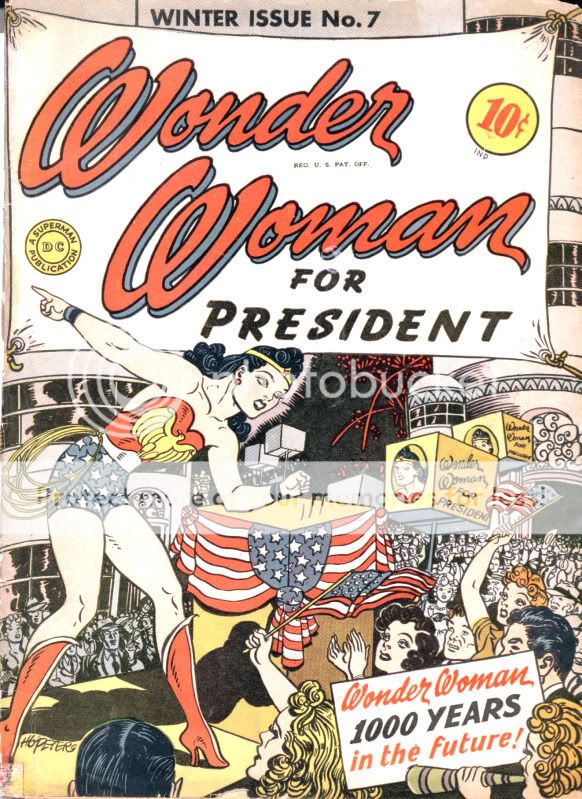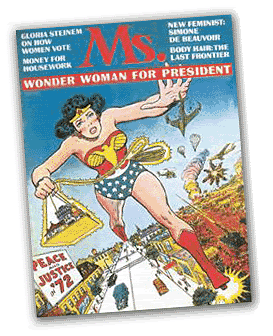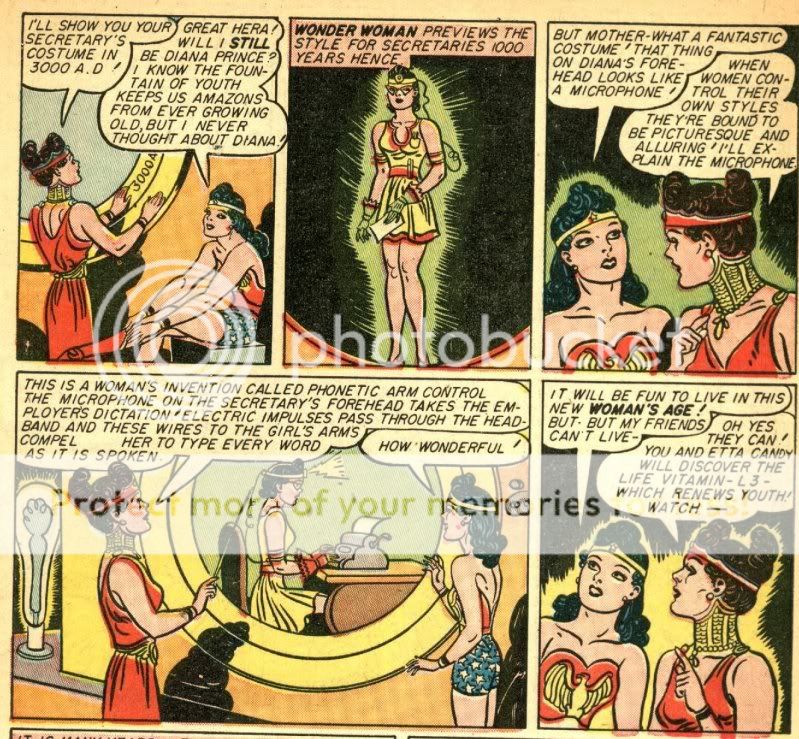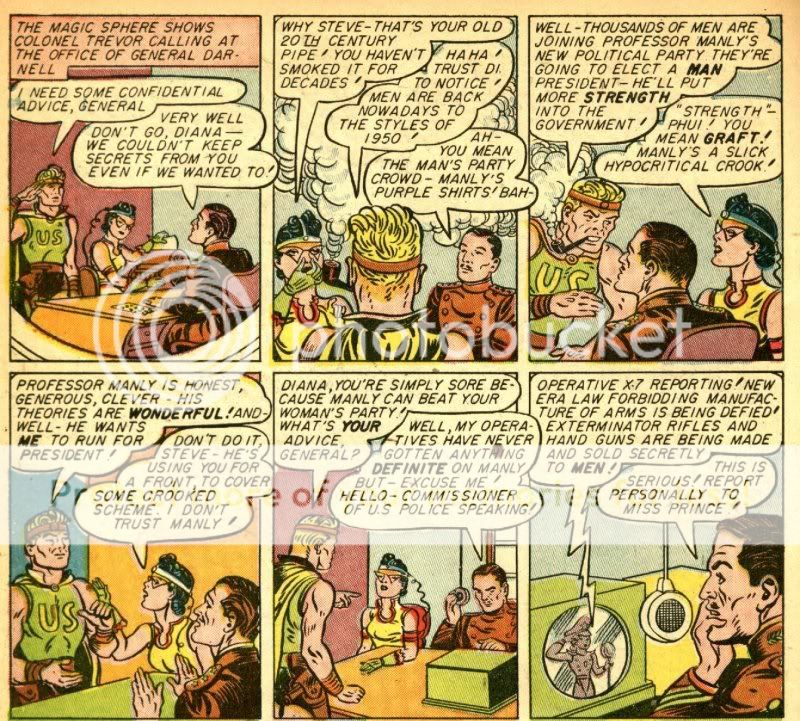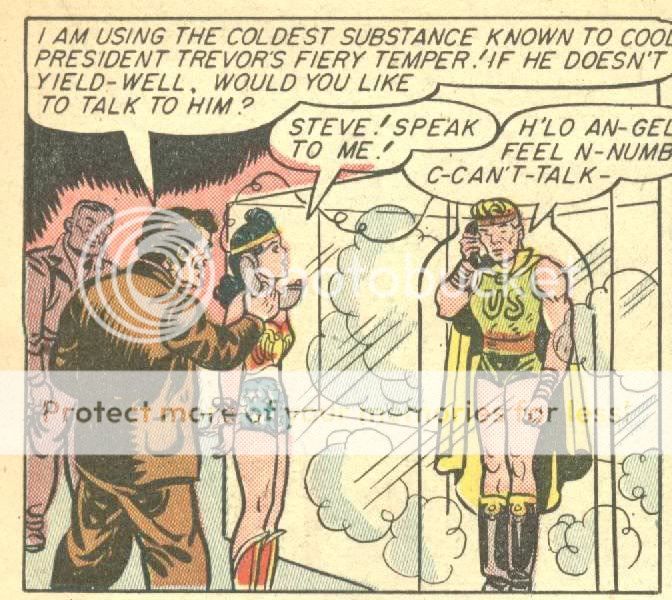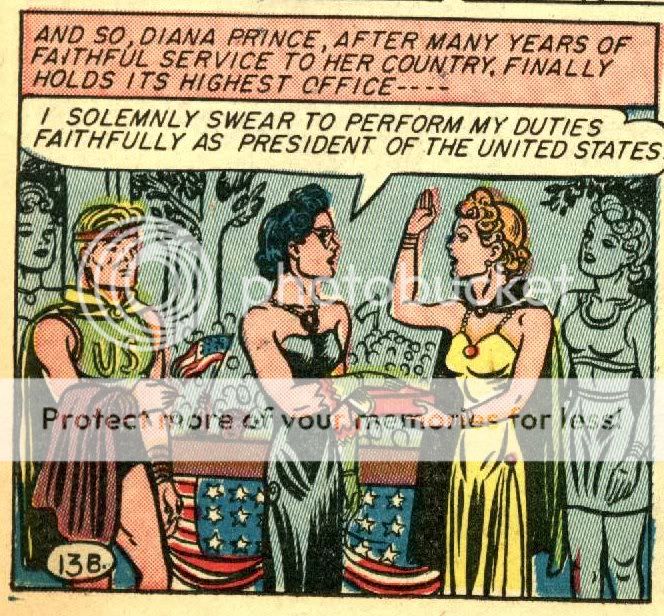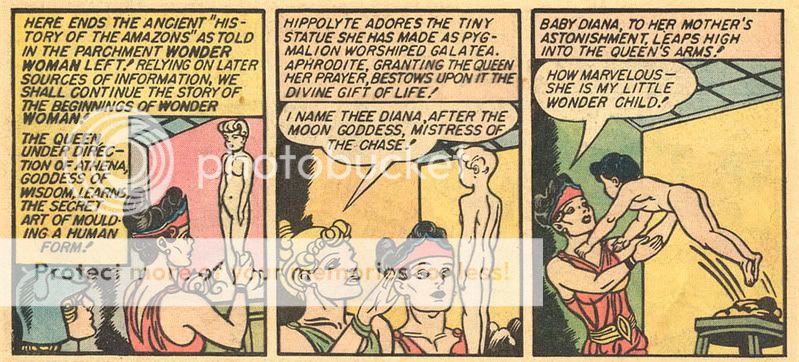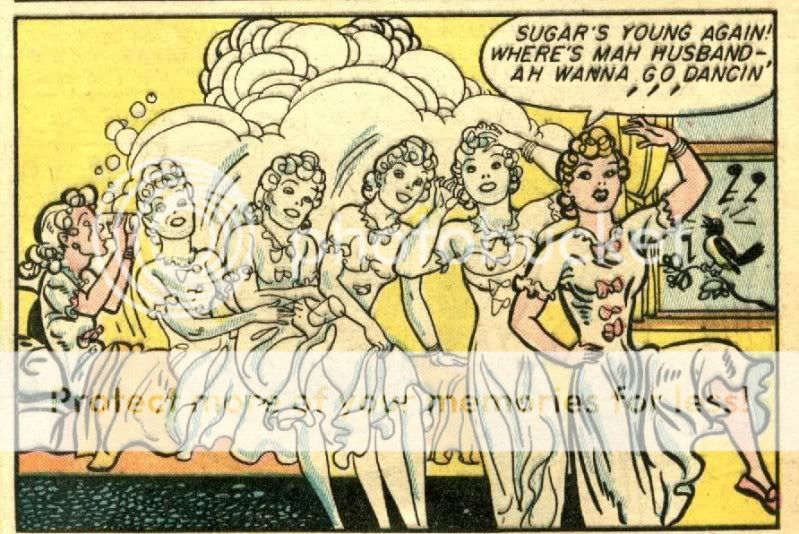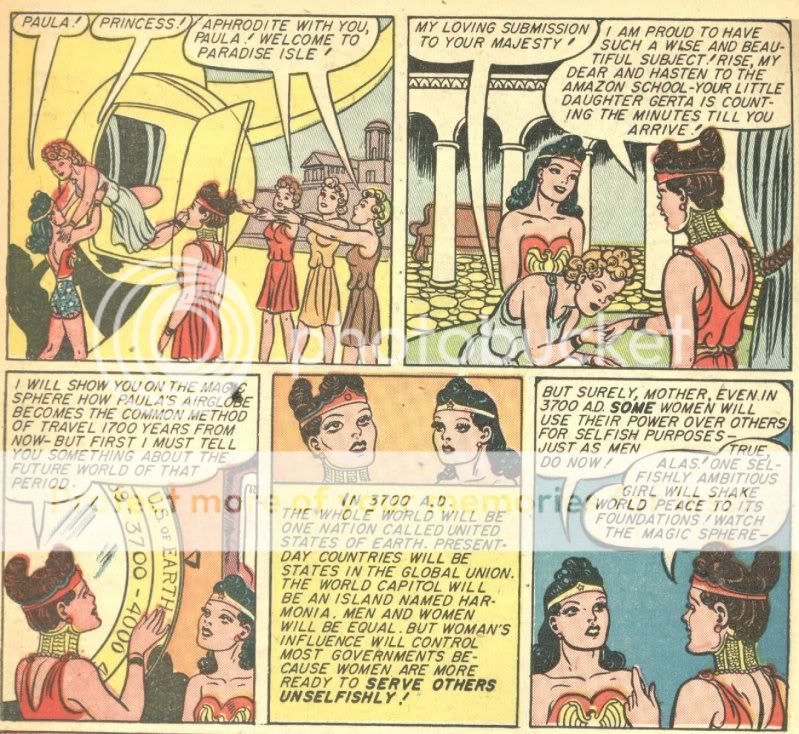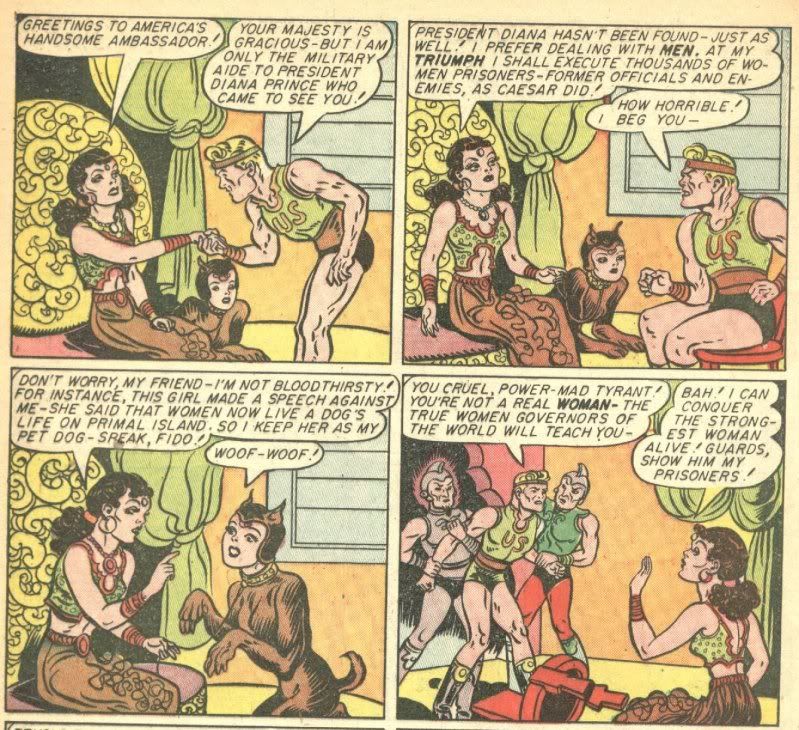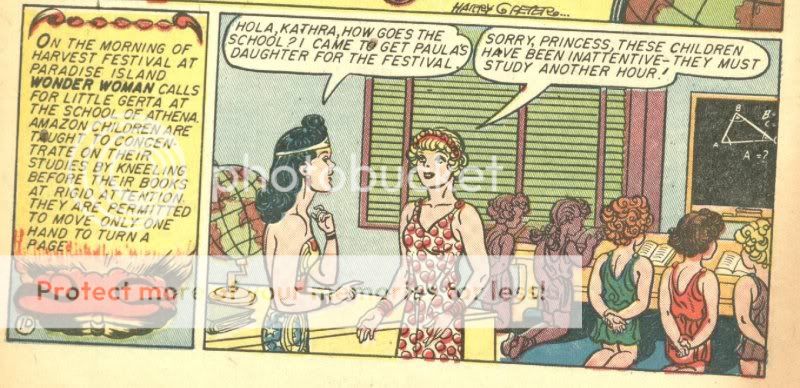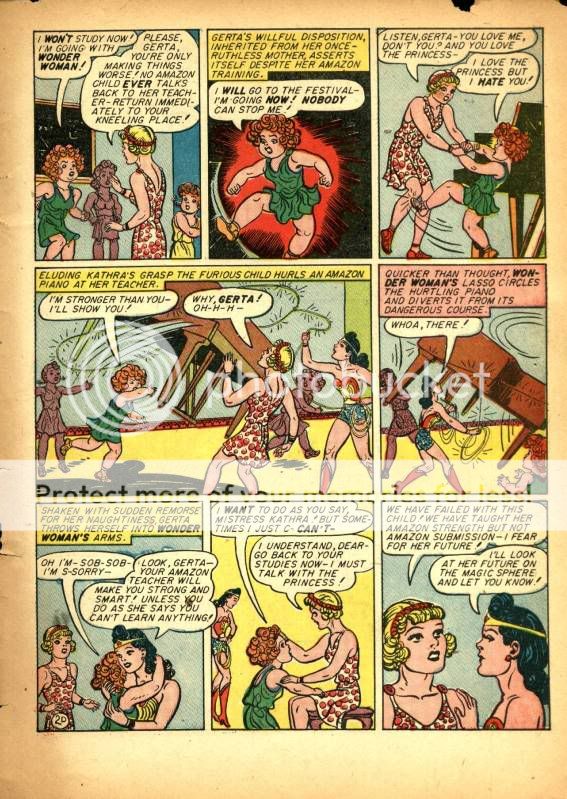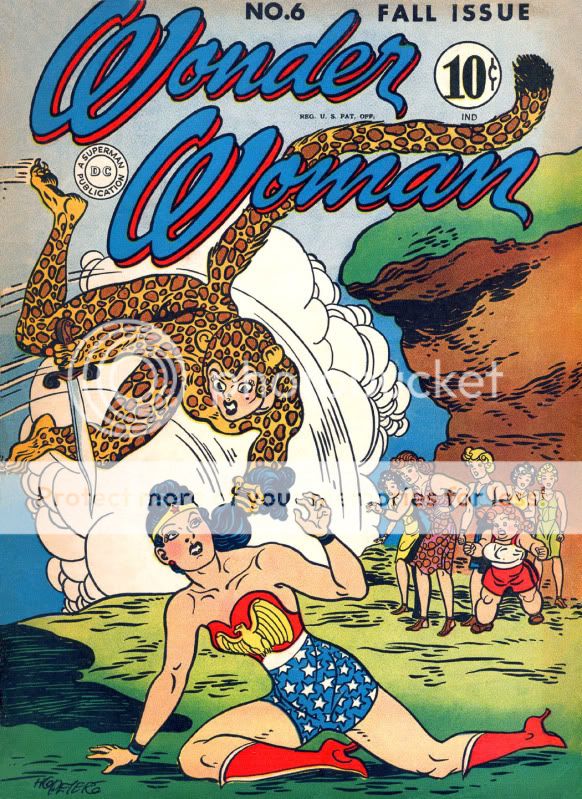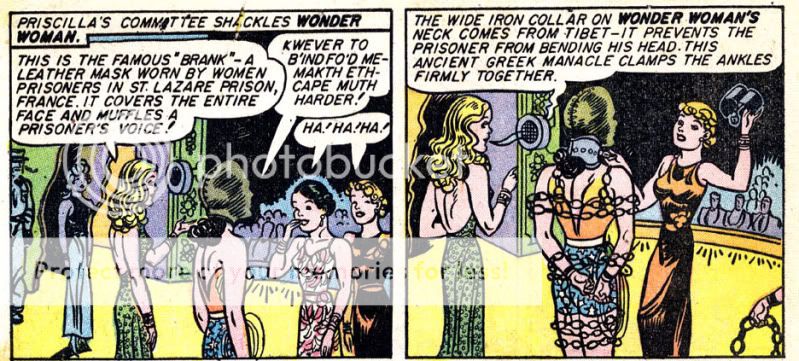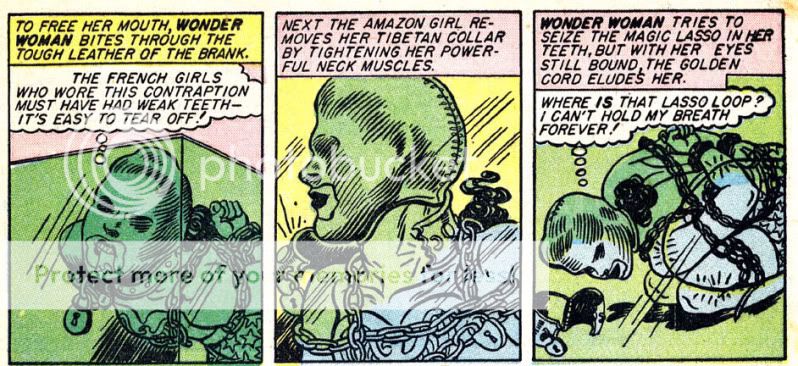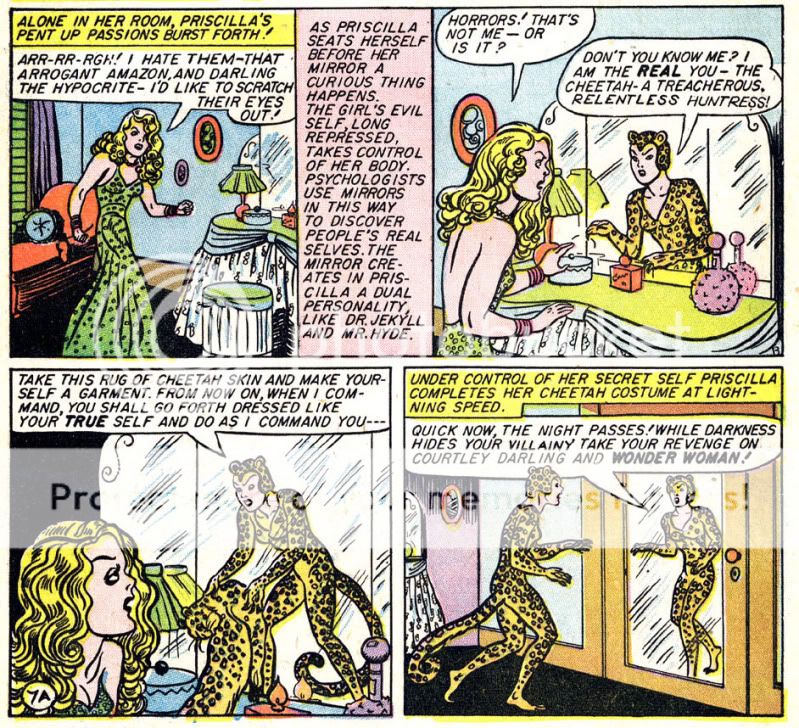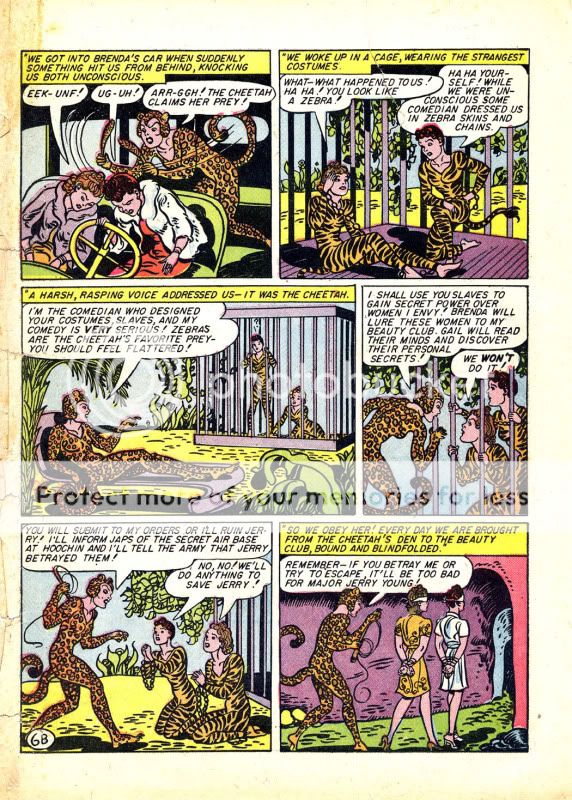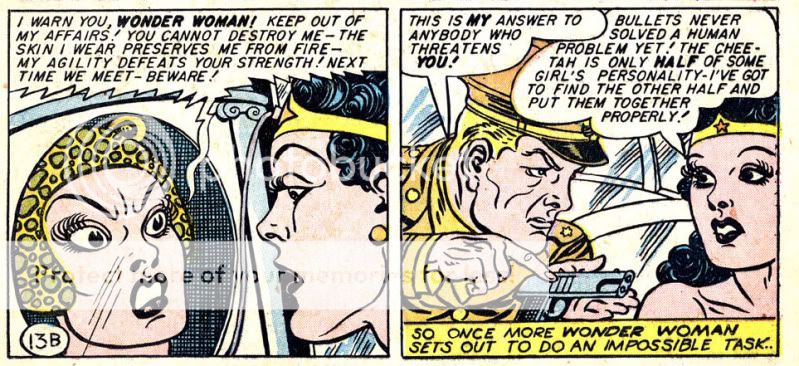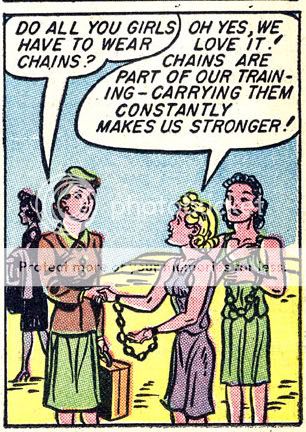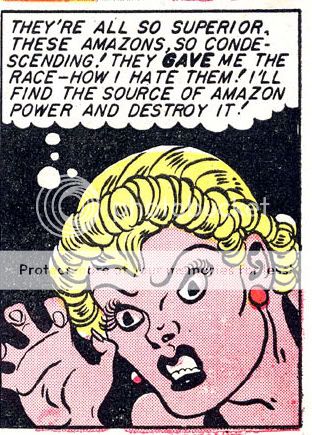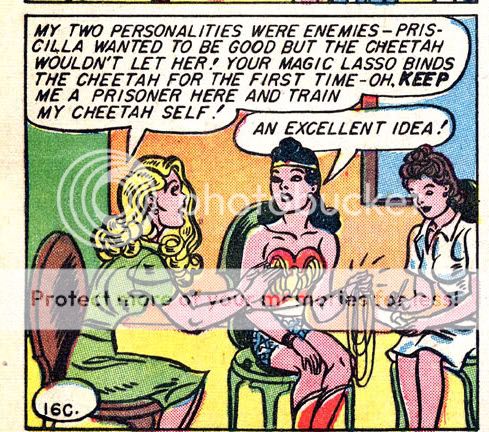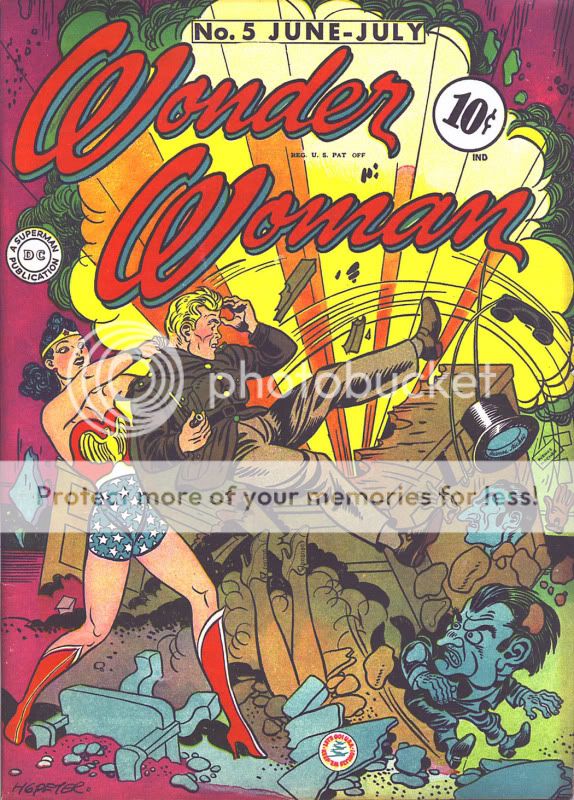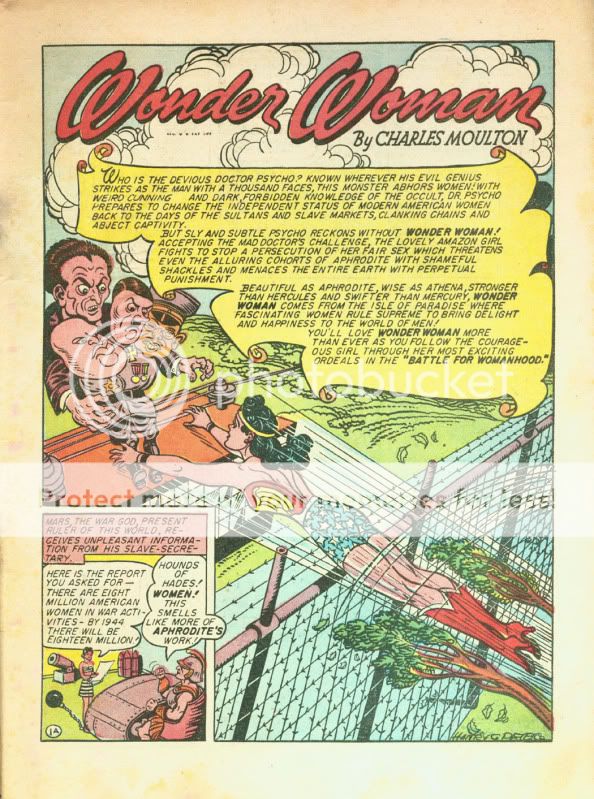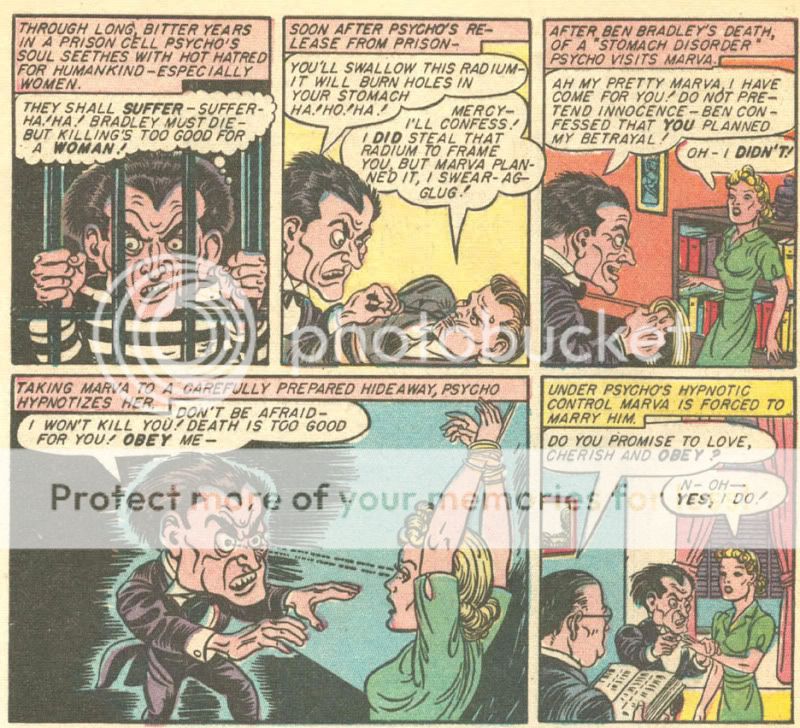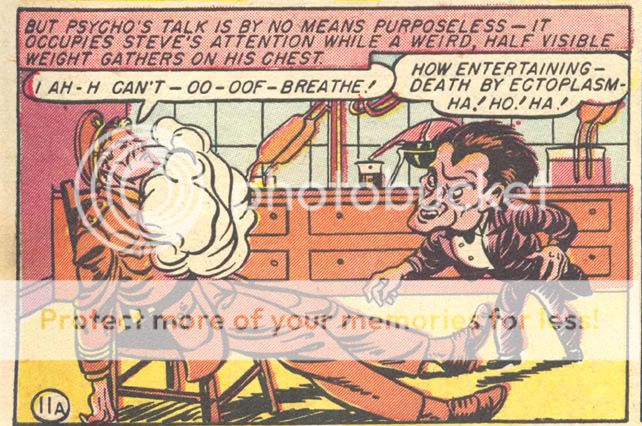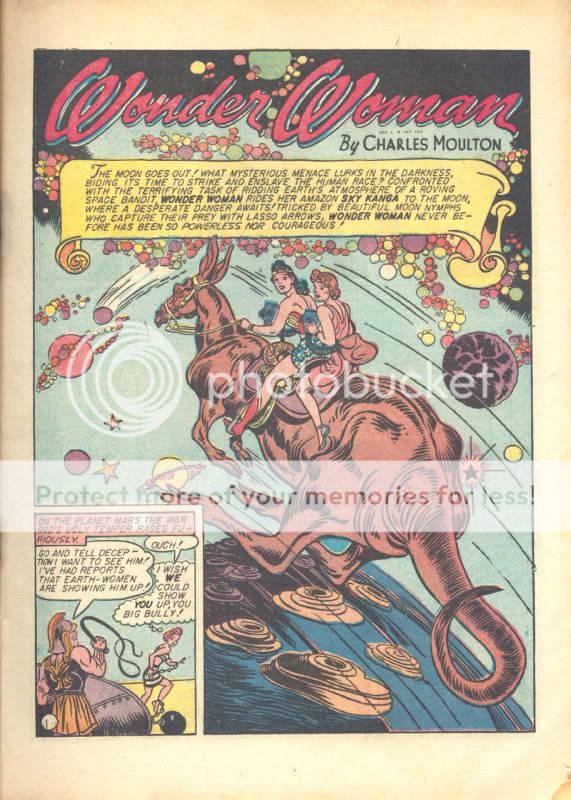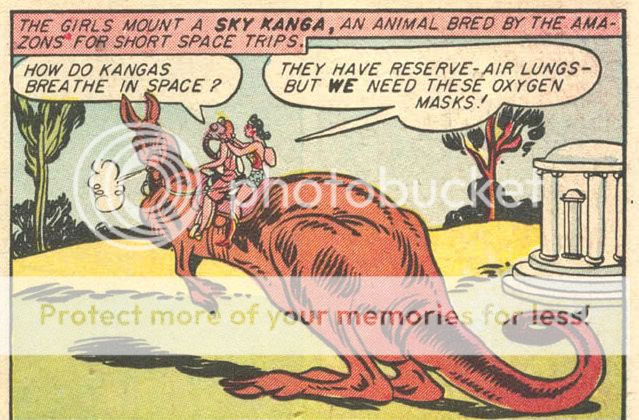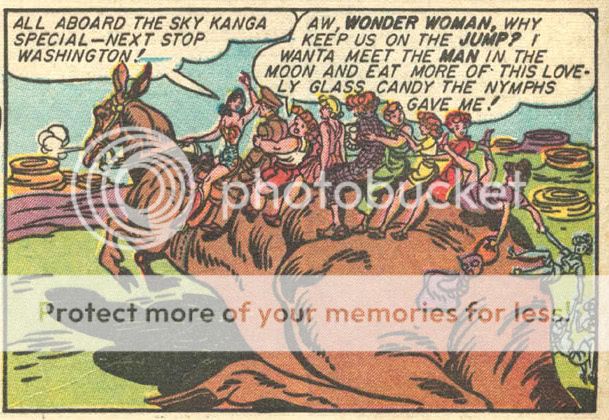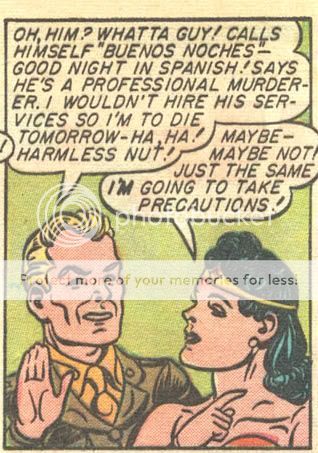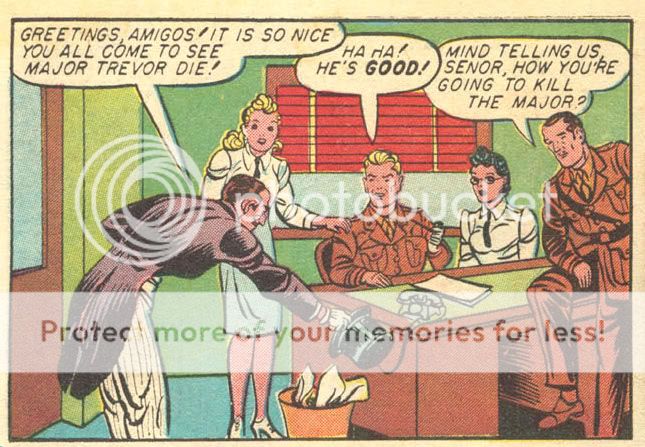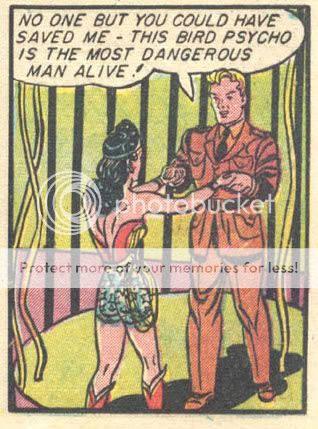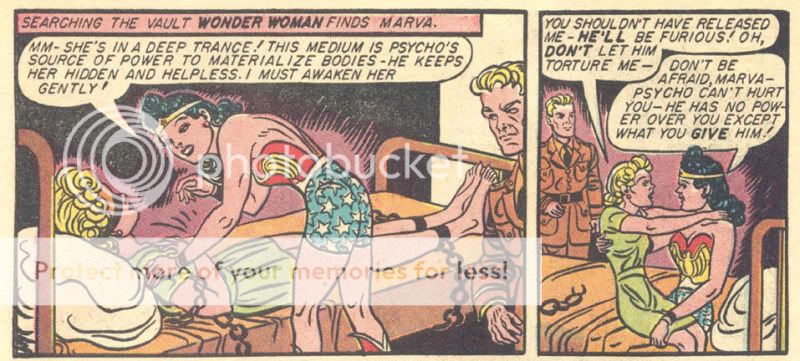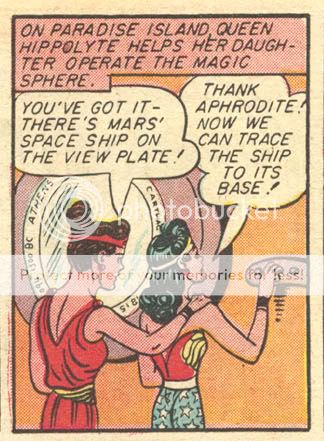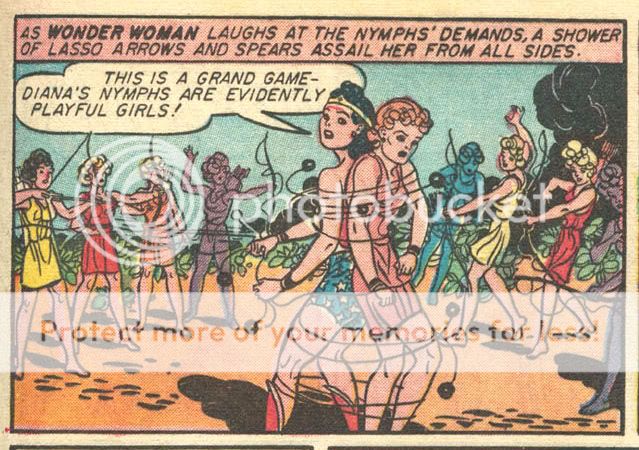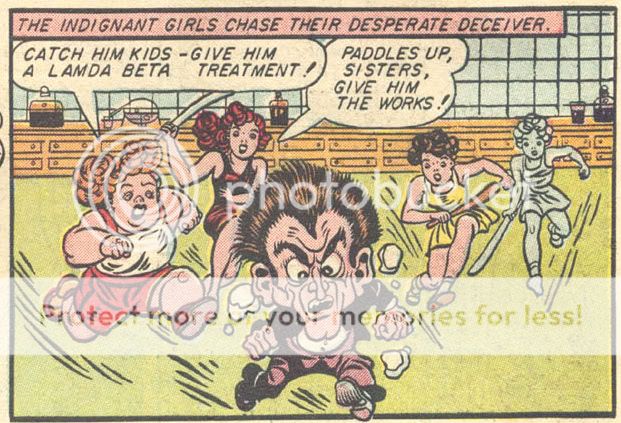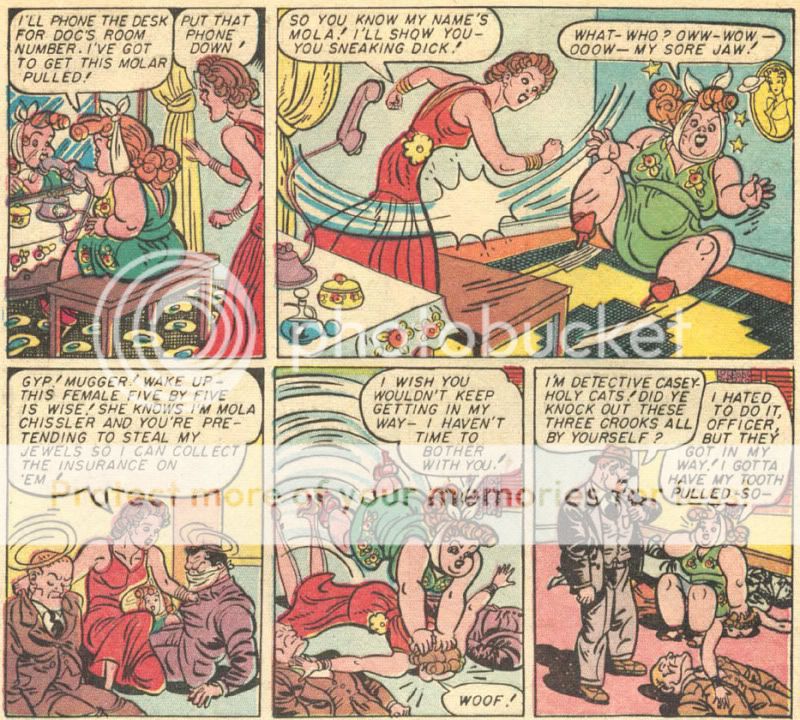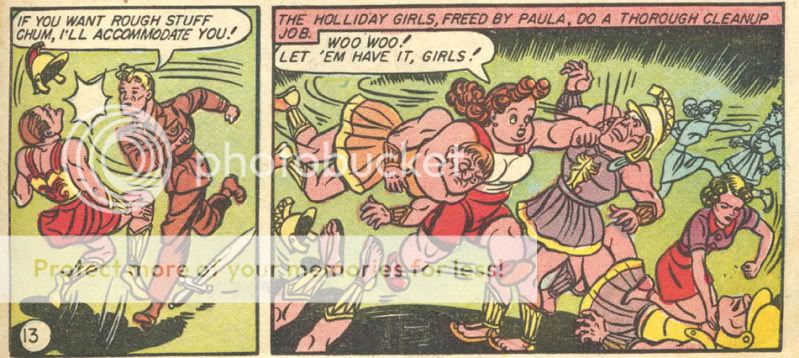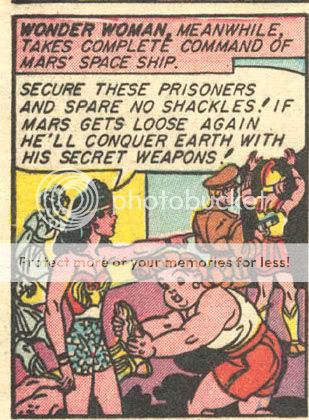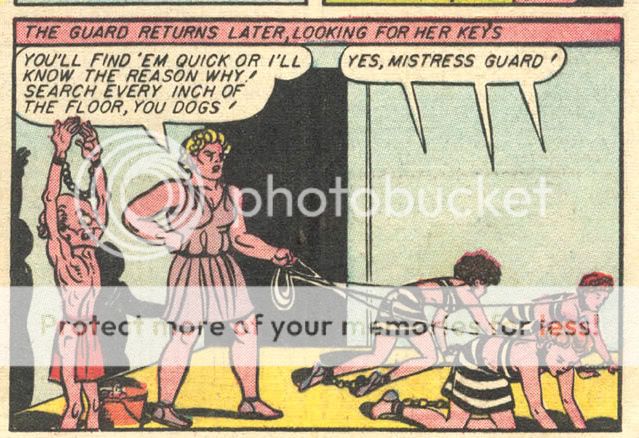Good lord is that cover fantastic. Peter’s animal drawings are always among the absolute best things he does; the wavery lines are so tactile, and the liberties he take with anatomy, halfway between cartooning and those Renaissance prints where it was clear they’d never seen a rhinoceros, or whatever, but damned if they weren’t going to draw the best of whatever bizarre rhinoceros-like thing had gotten lodged in their heads…I don’t know, it’s late and I’m babbling, but the misshapen ears on that boar, and the look of confusion in its little pig eye, and the way its hooves just sort of stick out stiffly, like it doesn’t know what to do with them… Dayenu, as my people say. But the rest of the drawing is fabulous too; I love the way the motion lines are a compositional device, drawing the attention just off dead center. and WW’s position is really lovely; it’s stiff and weird, like all Peter’s drawings, but there’s also a sense of actual movement. And the back muscles on the gladiator ; they’re not right, but the lines are so mobile that they seem righter than right…and the pattern on that kilt. I love Peter’s red swirly things, these perfect art nouveau patterns dropped into his insane outsider-art compositions.
Also, I like that Peter has chosen to draw this so it looks like Wonder Woman is assaulting some anonymous gladiator with a giant pig. I think (from the interior) that that is actually Steve Trevor, and she’s saving him…but you sure wouldn’t know that to look at it.
Anyway, the plot: it has something to do with the lost continent of Atlantis, which is, improbably, underground. It’s ruled by extraordinarily large and powerful women, which gives Peter a chance to have a lot of fun with scale:
Tiny little baby sailor men. Cute!
Not surprisingly , exact relative sizes are awfully unclear, but in theory the Atlantean men (or “manlings”) are supposed to be unusually small and weak. It’s like that episode of Star Trek the Next Generation, where the crew lands on a planet with powerful women who oppress their male compatriots, and we all learn that sexism is bad because, after all, guys, you wouldn’t like it if it were done to you, right? Except, of course, Marston does like it when it’s done to him. You can almost hear him chuckling maniacally in the background. Helpless sailors! That’s hot! hot! hot!
I talked a little in the discussion of Wonder Woman #7 about how Steve is really played as a himbo; a dumb, hunky slab of cheesecake for the young female reader. There’s certainly more evidence for that here, as you see in the panel below, where Clea, the evil ruler of Atlantis, has Steve brought before her in an interesting ceremonial outfit:
“…sacred serpents! He’s as big as a woman!” indeed. What exactly is she seeing under that loin-cloth that made her start prattling about snakes, I wonder?
Of course, a woman wouldn’t actually have a bigger snake than Steve…except, in Marston, she really might. Marston isn’t just interested in straightforward role reversal, as the Star Trek episode was. He’s interested in something a bit more…queer. With that fabulous headdress and the outfit out of burlesque, Clea might as well be in drag, and Steve’s outfit…well, say no more. As I’ve mentioned before, WW is in some sense Marston’s ideal self; he wants to be a goddess. Part of being female, naturally enough, would be desiring men. In this scene, I think Marston both desires and desires to be both Clea and Steve. The excitement is in the slippage from identity to identity and desire to desire; in the severing and subsequent circulation or diffusion of the phallus. In masochism, the appeal is that you escape the law and your identity in relation to the law in order to become someone and something else — including the phallus itself. That’s what fetishizing the female body is; it’s turning a woman’s body into the phallus — the source of authority and power. So when Clea says “He’s as big as a woman!” she’s actually comparing his phallus to *the* phallus; she is, in other words, fetishizing him right back.
I’ve talked about the agonized, repressed gay content in Cerebus before (to speak of another swords and sandalsish example.) The investment here seems very different though…basically, because, while I guess it might be considered repressed in some sense, it’s just not especially agonized. For Cerebus, holding onto male identity involves a rather desperate rejection of femininity…a rejection which, in turn, carries connotations of homosexuality (if you don’t like women, what do you like?) This quandary has no power over Marston. It’s true that the Steve-Clea relationship and/or the Steve-Marston relationship can be seen as queer…but Marston doesn’t shy away or run scurrying from the implications. He embraces them:
That’s flirting behavior, that is. And sure, he’s punished for it and sentenced to die because he’s just too, too flamboyantly strong. But that’s an excuse, not for torment and agony, but for a expulsive release of testosterone and romping with boars. And, of course before Steve can be crushed by a “mammoth peccary”, as Marston puts it, he’s quickly rescued from phallic immolation by the arrival of Marston-in-drag, aka Wonder Woman.
This sort of thing makes it awfully hard to take seriously Marston’s half-hearted gestures at traditional romance comics tropes…are we really supposed to believe WW and Steve are shy with each other after they’ve rolled around in their underwear with pigs?
Anyway, I also like this scene, where Clea wanders around with a suggestive hose spraying her unsuspecting adversaries as they swoon ecstatically.
Or this one, where WW has concealed herself in a intriguingly shaped projectile:
And then there’s Etta, who’s butchness and artificiality — Parker makes her more and more distorted and dwarfish as the series goes along — could, I think, also be read as a kind of transvestite drag. Certainly, she’s carrying around a big-enough phallic substitute here:
And then there are moments like the below.
WW has frequently been read (starting with Frederic Wertham) as a lesbian fantasy, whether for women or men. The fact that it could almost as easily be read as gay fantasy (again for men or (shades of yaoi) for women) has gotten a lot less attention. The point, though, is less that it’s gay, or straight, or lesbian, or all three, than it is the sloughing off of stable identity in the interest of deliriously clunky role-playing. Thus, in the above image, Marston surely gets off on the idea of two women together, but he’s also as surely identifying with both of them; he’s viewer and role-player, excited by both the lesbian connotations and by the sublimated male impersonation. As Linda Williams writes in Hard Core, her classic study of pornography, sexual identity in masochistic scenarios is “an oscillation between male and female subject positions held simultaneously, in a play of bisexuality, at the level of both object choice and identification.”
The obsession with identity play is also indicated by Marston’s obsession with masks and concealment:
That last one doesn’t include a mask, of course, but it is a case of dual identities and role-playing. Wonder Woman is in her Diana Prince disguise; meanwhile the Atlantean Princess she’s talking to is disguised (not super-effectively, I’ll grant you) as a college football enthusiast. Moreover, the disguises are, I think, meant to be sexy or exciting in large part because of gender ambiguity. Both costumes are butch; Diana in her severe military uniform and the Atalantean in her football outfit. And not satisfied with that, Marston has to hand her the biggest phallic cliche in the book:
Yep, she’s smoking a cigar there. This scene could be lifted, almost as is, and put in a cross-dressing screen comedy of the day, where the joke would be that the agressive, giant, cigar-smoking woman and her uncomfortable, nerdy companion are actually both men. Or it could be dropped into a women in prison movie, and the butchness would connote lesbianism. For Marston it’s both, more or less; the shivers of pleasure come from imagining himself as the powerful, phallus wielding woman and imagining himself dominated by her as the nerdy Diana is…or dominating her, as WW inevitably does:
Of course, we all know that Marston loves, loves, loves everyone to submit to loving authority. But he also loves role-playing, which means he loves drama…and you don’t get a whole lot of drama if everyone is submitting lovingly. Like most masochists, Marston may say he wants to be dominated, but he also wants to rebel — so there can be more domination and more rebellion and etc. etc. It’s not enough for Marston to have the weakling manlings of Atlantis be subjugated; he has to have them rebel and dominate their captors so they can be tied up again too.
It’s interesting in this context how theatrical Peter’s art is; everything looks like it could be taking place on stage. He almost always shows the action form the mid-distance, so entire bodies are visible; close-ups are few and far between. The costumes and backgrounds look more like dress-up and stage sets than like real life. The king with the crown and the cigar really looks like a diminutive gangster playing dress up on a throne too big for him. And the stiffness of Peter’s figures generally suggests tableaux; the scenes look frozen and staged even at their most action adventurey:
The paracutes in that second panel come out of the volcano like jack-in-the-boxes; the motion lines don’t so much rush them from the opening as anchor them to it. And that last panel; the center parachuting pirate almost seems to be posing for the camera . The men in the foreground act as a kind of cinema audience — their hands are even raised as if they’re about to clap.
As long as I’ve worked my way back around to Peter’s art maybe I’ll finish with these:
I love those arrows tieing themselves in knots around the plane, and that adorable, tiny, misshapen whale on the map. I just ordered the Les Daniels WW book, and I’m hoping it’ll maybe tell me a little more about Peter’s background and his relationship with Marston. You can’t help but wonder what he thought about all this stuff; he certainly embraced the fetish aspects enthusiastically enough. But then, maybe he would have been just as happy drawing miniature cetaceans….


